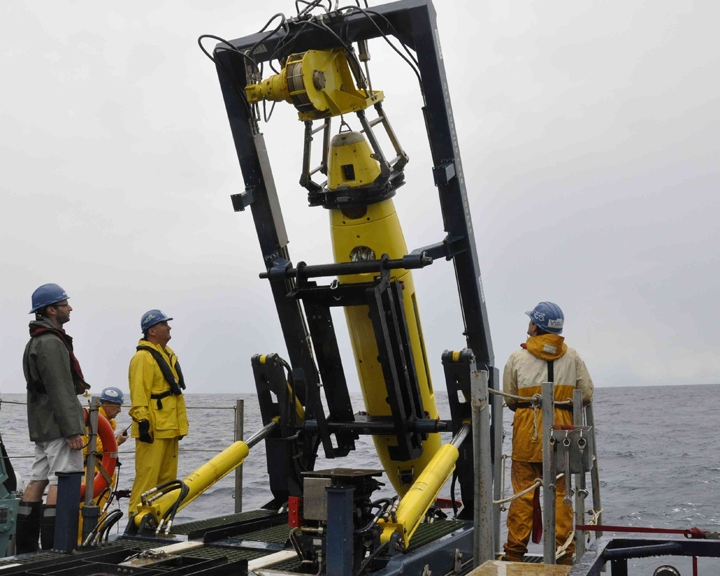Published May 6, 2011

In this June 8, 2009 file photo released by Brazil's Air Force, Brazil's Navy sailors recover debris from the missing Air France Flight 447 in the Atlantic Ocean. (AP)
In June 2009, Air France Flight 447 crashed into the Atlantic Ocean off the coast of Brazil. All 228 people on-board died. Nearly two years later, authorities have no idea why the plane went down.
Yet.
David Gallo, a researcher at the Woods Hole Oceanographic Institution on Cape Cod, hopes to change that. He was the co-leader of the team that found the sunken plane last month, nearly three miles below the ocean’s surface.
Call Woods Hole
There has been no explanation as to why the plane crashed — it simply vanished from air traffic control radar screens somewhere between South America and Africa. No distress signal, no Mayday call.
A day after the plane vanished, Brazilian Air Force pilots found small pieces of the plane in the middle of the Atlantic, but the rest of the plane had sunk. Authorities hoped the answers to their questions would be contained in the on-board flight recorders that keep data on planes, but no one knew where exactly the plane (and the recorders) went down.

The crew prepares a Remus submarine to search the ocean floor. (Courtesy Woods Hole Oceanographic Institution)
Enter Gallo and his team from Woods Hole. Turns out, if you lose something deep in the vast ocean, they’re the people you want to call.
“It was in the middle of the Atlantic Ocean, somewhere in the range of about two to three miles deep, we knew that much,” Gallo said. “We knew that it had come down somewhere on the flanks of an underwater mountain range. And the group of people on this planet that can work in that kind of area — that deep and that kind of rugged terrain — is very small. At Woods Hole, our teams have been doing that for about 30-40 years.”
The Woods Hole Oceanographic Institution
Woods Hole scientists have been exploring the ocean for a long, long time. The institute was founded in 1930. In the 1970s, they explored the vast deepwater ecosystem. In the ’80s, they’re the ones who found the Titanic. They now have more than 1,000 ocean researchers.











